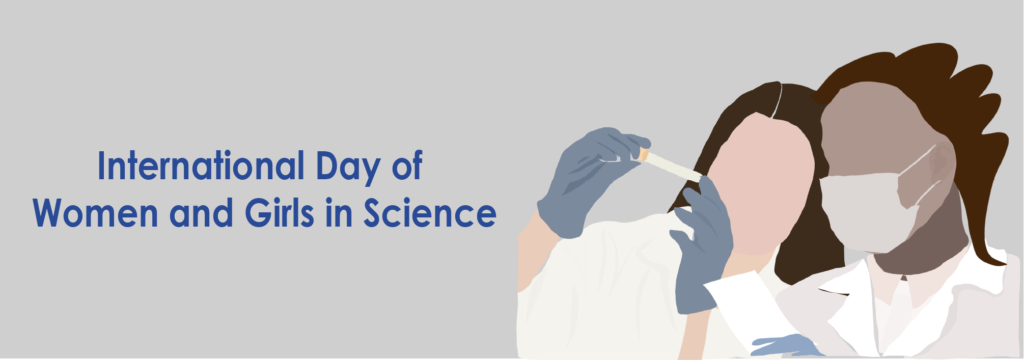…and we hope to inspire other women and girls to join us.
The world has made both science and gender equality a priority. According to the United Nations, both are “vital for the achievement of the internationally agreed development goals, including the 2030 Agenda for Sustainable Development.” While there have been important advancements to include women in science, at the moment less than 30 percent of researchers globally are women.
This year, the UN declared that the theme for Women and Girls in Science Day 2021 is “Women Scientists at the forefront of the fight against COVID-19.” While the members of the Active Aging Research Team are not engaged in the science to find a vaccine for the virus, we have learned a lot about what it takes to keep the older people in our society connected and active during a time of lockdowns and uncertainty. Our scientists are also learning more about policy that keeps residents, staff, and visitors of long-term care homes safe and healthy. This is the everyday science that helps us all to maintain quality of life as we age. This science is vital.
So, today, we celebrate the women of the Active Aging Research Team. We share their pearls of wisdom, but read on for their responses to a brief questionnaire. They are brilliant and inspiring.
Lessons & Memories from the women of the Active Aging Research Team
“If you don’t see a clear path in front of you, you might have to make your own. Take it step-by-step. It’s ok if you don’t know if you don’t have it all figured out yet.”
“I wanted to understand how to take research findings (e.g., physical activity is good for you) and apply them to help improve peoples’ lives.”
“Find a mentor that you admire and that will take the time to challenge you to succeed, and make sure the area you go into is one you are passionate about, it will show in your work!”
“Self-doubt was/is probably the greatest challenge – regularly feeling like an imposter (not uncommon in academia!)”
“Incredible people who became lifelong friends and mentors [helped me to stay with my career goals]. My greatest incentive as I ‘pay that forward’, is working with talented, passionate, and committed young women. They surprise and inspire me every day.”
“Knowing where your passion (potentially) lies is truly a blessing! Disregard the false stereotypes in the field and do what your heart desires.”
“My parents didn’t see Kinesiology as a great field of study and think it’s the equivalent of personal training. It was challenging to convince them otherwise.”
“My early training and research was in neurovascular physiology. In this space, not only did I learn about an incredibly complex and connected physiological system, but I realized that communication, translation of evidence, and relationships between people and organizations had a huge influence on health science advancements.”
“Let your curiosity guide you. There are many areas and career paths in science and it is important to love your area. Keep exploring until you land where you feel passion for change!”
“I think there is probably a field out there for everyone and so many skills are transferrable between fields. You can’t know everything – build a community, collaborate, find a supportive mentor, create a great team – people who will stand behind you and beside you.”
Meet the Women of the Active Aging Research Team
A. I am a curious person – and at a young age realized there were more questions than had answers. I set about answering some of them. I was also very active at every age – always on the go. As a young adult, I felt compelled to find a way to keep large populations of people healthy through physical activity. Small goal ????.
A. I came from a troubled home where post-secondary education was not valued or encouraged. I left home at 16 and had to find a way to support myself and my education.
A. Incredible people who became lifelong friends and mentors. My greatest incentive as I ‘pay that forward’, is working with talented, passionate, and committed young women. They surprise and inspire me every day.
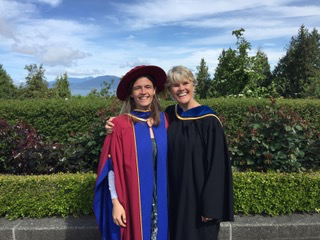 Professor Heather McKay with her trainee and mentee, (now) Dr. Anna Chudyk
Professor Heather McKay with her trainee and mentee, (now) Dr. Anna Chudyk
A. We have had to move our health-promoting innovation that aims to keep older people active and connected (more important now than ever!!) to the home environment.
A. Aim for the stars – find a woman in science to guide you. Don’t be shy to approach them-send them an out-of-the-blue e-mail and introduce yourself. Every woman in science that I know would be delighted to serve as a mentor to girls or young women who aspire to explore the many, many tremendous, and exciting opportunities in science.
A. I have always had a lot of questions! My dad is scientist and I grew up with science as part of everyday life.
A. Organic chemistry. I squeaked by with a D. As an undergrad I felt like that mark defined me; now I feel like it is a good point of bonding with many undergrad students!
A. Strong female role models (gramma, mom, Dr. Heather McKay, Dr. Anne Martin-Matthews) and being a good example for my daughters. I have been fortunate to receive SSHRC, CIHR and MSFHR funding for my work and I feel a deep sense of commitment to ensure that these investments have impact. For me the impact is improving the lives of older people – this propels me in my career goals.
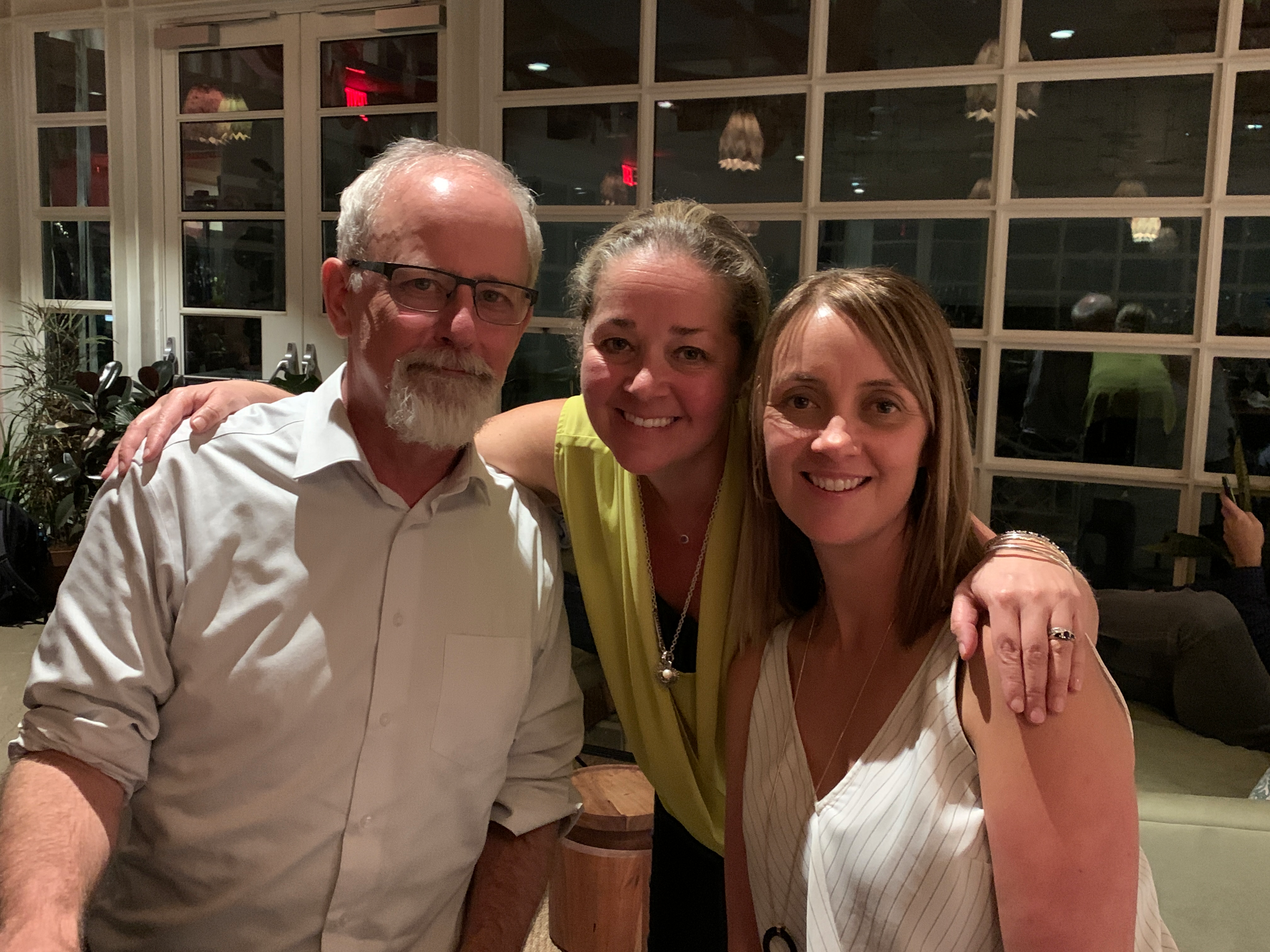 Dr. Joanie Sims-Gould at the Gerontological Society of America conference with Dr. Paul Stolee.
Dr. Joanie Sims-Gould at the Gerontological Society of America conference with Dr. Paul Stolee.
A. I have marveled at how our team has balanced all the demands of the pandemic including juggling the care and schooling of young children. In this way, we have all had to be more flexible with schedules and sharing our spaces with our families.
A. Let your curiosity guide you. There are many areas and career paths in science and it is important to love your area. Keep exploring until you land where you feel passion for change!

Samantha Gray presents her research poster at The International Society of Behavioral Nutrition and Physical Activity Conference
A. Growing up I had a supportive family network, which encircled my grandmother who lived with us. In my teen years, I began to notice her health decline, and eventually, I began to care for her. Providing care while respecting her dignity and independence became exponentially challenging once she began to experience mobility-disability and recurrent falls, which resulted in hospitalization. Her passing left me with deep sadness but with an unyielding appreciation of our relationship and the realization that her story could be told by thousands of older adults in Canada. Her story and that of countless other older adults is why I pursued a career in science (specifically a PhD program focused on promotion of healthy aging).
A. Self-doubt was/is probably the greatest challenge – regularly feeling like an imposter (not uncommon in academia!)
A. Remembering all the fond moments I shared with my grandmother – particularly when she helped me learn how to read. She wholly enriched my life and I believe she valued our closeness too.
I learned that I need to be more proactive in asking for help – since I can no longer just pop over to a colleague’s desk and ask for help face-to-face!
A. I would say it is so important and so valuable to find a mentor/supervisor who supports you both professionally and personally.
 Sarah Lusina facilitates a collaborative scientific meeting
Sarah Lusina facilitates a collaborative scientific meeting
“I have always been so curious about how systems work and about ways to most effectively enhance the health of people (and planet – my side hustle). My early training and research was in neurovascular physiology. In this space, not only did I learn about an incredibly complex and connected physiological system, but I realized that communication, translation of evidence, and relationships between people and organizations had a huge influence on health science advancements. Informed by these early experiences, I have committed my career to supporting the ‘relational’ aspect of science – knowledge translation, implementation science, partnership relations, and strategy. There remain many technical problems that need to be solved. In tandem, we need ‘system and communication scientists’ to help people and organizations relate to the evidence, integrate it within their context, and amplify the solutions. The response to COVID-19 pandemic continues to show us how technical, system, and communication experts need to work together to positively impact the health of populations.”
A. I love to learn, and research is a beautiful journey of challenging your present thinking and pushing your bounds of knowledge.
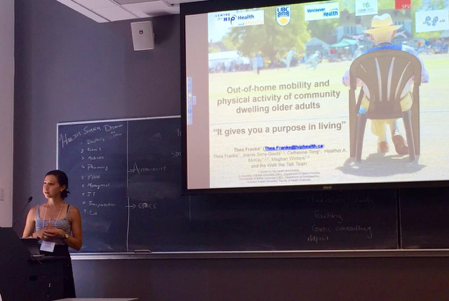 Dr. Thea Franke shares her research
Dr. Thea Franke shares her research
A. Being overwhelmed by the vast body of research during my PhD and trying to find my own niche
A. Perseverance and amazing mentors!
A. I am fortunate to work with many other brilliant women who recognize the need to have a flexible work schedule, and a flexible mindset (think zoom calls with toddlers!). As a mother, this has been critical to being able to continue and succeed in my work.
A. Find a mentor that you admire and that will take the time to challenge you to succeed, and make sure the area you go into is one you are passionate about, it will show in your work!
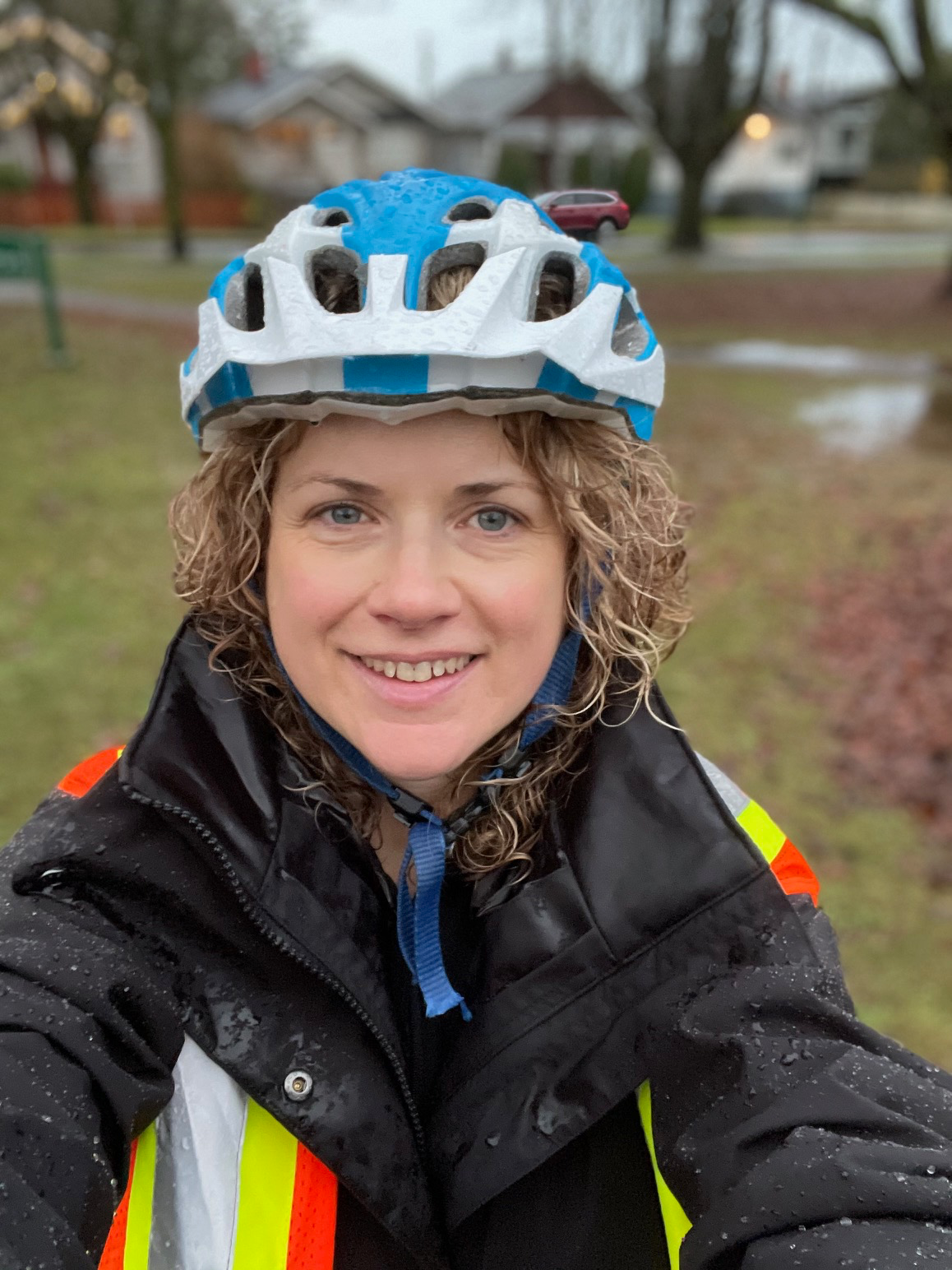 For Callista Ottoni, fieldwork is in the community.
For Callista Ottoni, fieldwork is in the community.
A. A colleague of mine (Dr. Anna Chudyk) always said “you can’t change the world but you can make a dent.” I wanted to contribute in some way – big or small – to greater social and health equity
A. Being successful in academia also means learning how to deal with rejection – be it grants or journal articles. So putting my ego aside and learning from rejection or criticism has been both my biggest challenge and asset.
A. I recognize it’s such a privilege to work with so many smart and talented women who value my perspective.
A. I made my home office super cozy with plants and salt crystal lamps. Also, noise-cancelling headphones that drown out my 3-year-old.
A. If you don’t see a clear path in front of you, you might have to make your own. Take it step-by-step. It’s ok if you don’t know if you don’t have it all figured out yet.
A. I have always loved science. I think my parents probably knew before I did that I would end up in one field of science or another.
Research itself is full of challenges. One that I struggled with early on was deciding where to focus – there are so many different things I would love to learn about. It still find prioritizing and focusing challenging – there is never enough time to read everything, do everything etc.
A. In addition to my family, I have had amazing mentors, colleagues, and friends along the way that have supported, pushed, and challenged me as needed.
A. Although there are many perks to working from home – I miss the casual conversations with colleagues that turn into new research ideas.
A. I explored a few different research areas before landing where I am. I think there is probably a field out there for everyone and so many skills are transferrable between fields. You can’t know everything – build a community, collaborate, find a supportive mentor, create a great team – people who will stand behind you and beside you.
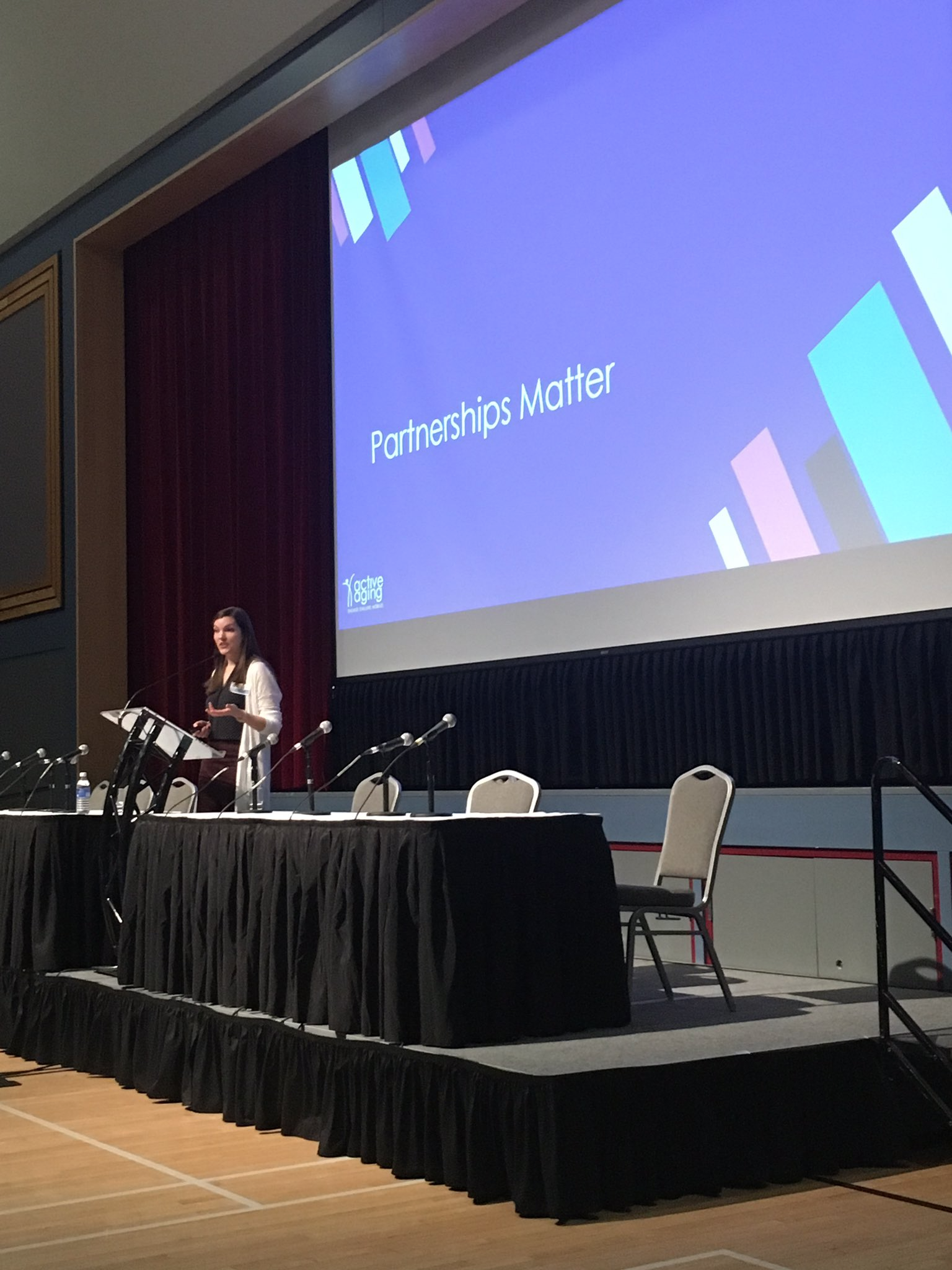
Christa Hoy gives keynote address at a public health conference in northern British Columbia
A. I wanted to understand how to take research findings (e.g., physical activity is good for you) and apply them to help improve peoples’ lives.
A. It took me a little while to find a research area that really fit with my curiosities. Graduate studies helped me develop my research skills, and I am fortunate that I’ve been able to apply those skills now that I am working in an area that aligns so well with my interests (program evaluation/implementation science).
A. I’ve been fortunate to have many incredible colleagues and mentors (mostly women!) who have helped me learn and grow.
A. Aside from the obvious, working from home, I’ve had to be flexible and respond to the changing needs and realities facing our community partners and older adult participants. This has meant adapting our intervention and data collection to be entirely virtual.
A. Find people whose work you are interested in and ask if they have any opportunities to get involved.
A. My major is actually a fascinating mix of the arts and the sciences (we study both the social and biological determinants and aspects of health). I’ve always been interested in human biology, health, and medicine, but more on a macro level. So here I am today studying Health Sciences/Public Health!
A. Learning certain required topics that I had absolutely no prior knowledge of.
A. My actual enjoyment of my courses and co-op work!
A. Navigating the world of Zoom as part of the job – took a few awkward invitations to get the email right.
A. Knowing where your passion (potentially) lies is truly a blessing! Disregard the false stereotypes in the field and do what your heart desires.
A. Kinesiology is my choice of study. I have developed a strong interest to delve deeper into this field of study because it aligns with my passion for sports training and my interest in rehabilitation sciences. As an ex-competitive swimmer and a lifeguard, I have had the opportunity to share my passion and knowledge with the community, which has become a defining part of my growth and maturity. On the other hand, my interests in rehabilitation sciences stemmed from my personal experience of being able to recover fully from a major strain. With my knowledge in Kinesiology, I strive to help individuals achieve a better overall quality of life and create an impact in the community. I hope to connect with the individuals and assist them in positive motor development and find ways that can bring them closer to the hobby they once enjoy, which they may not be able to anymore due to their chronic injuries.
A. My parents didn’t see Kinesiology as a great field of study and think it’s the equivalent of personal training. It was challenging to convince them otherwise.
A. My consistent efforts and resilience helped me stick with my career goals. I am also fortunate to experience a well-rounded education and explore a variety of extra-curriculars.
A. As the nature of the research assistant job is mostly sitting, I have been incorporating walking and stretching breaks throughout my workday. When I lifeguard at the pool, I walk around as I scan the pool to maximize my step count.
I would advise other women and girls to explore different areas of interest and find their passion.
“On the International Day of Women and Girls in Science, let’s change this narrative. Join us in celebrating women and girls, who are leading innovation and call for actions to remove all barriers that hold them back.” (United Nations)

